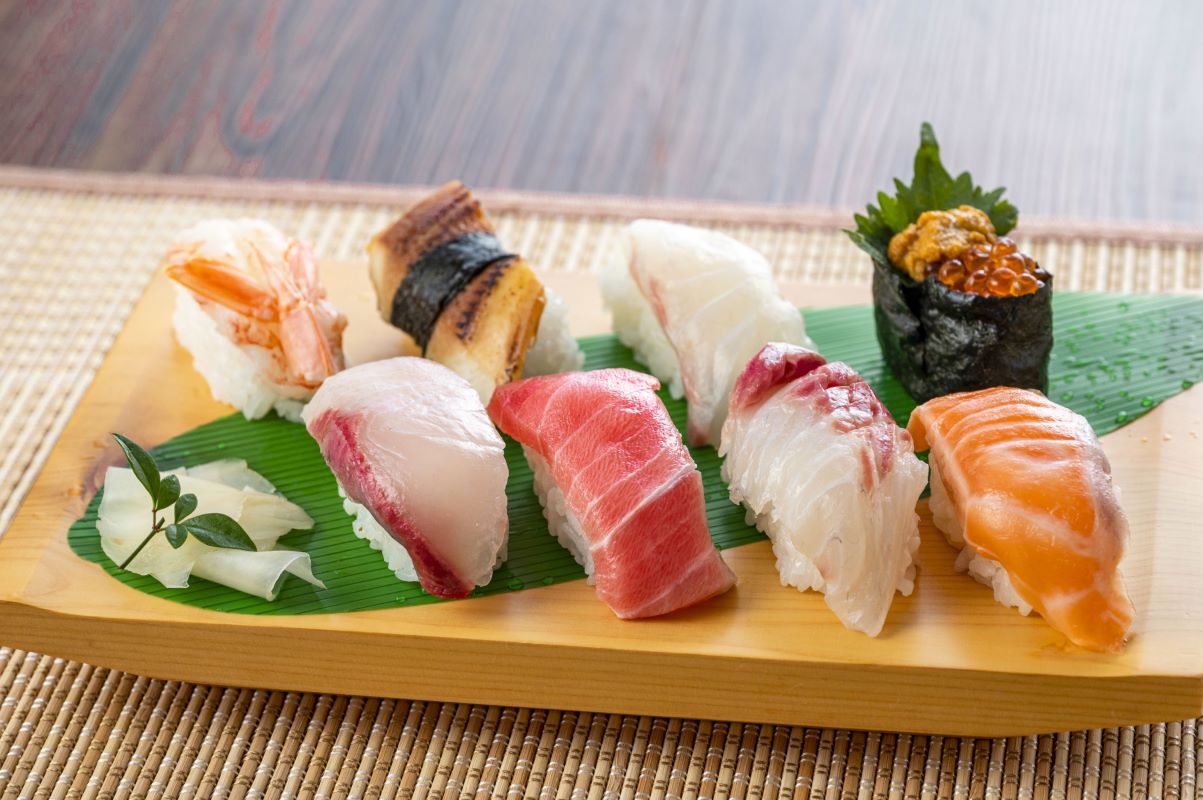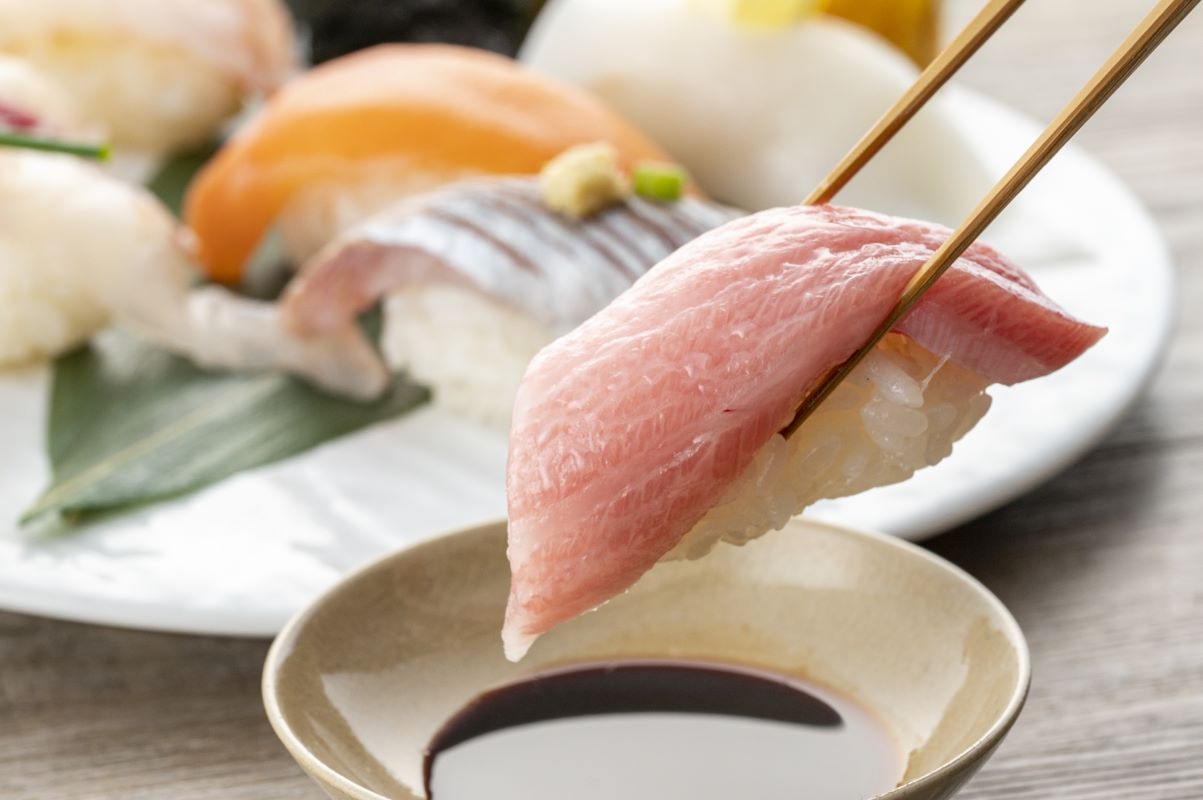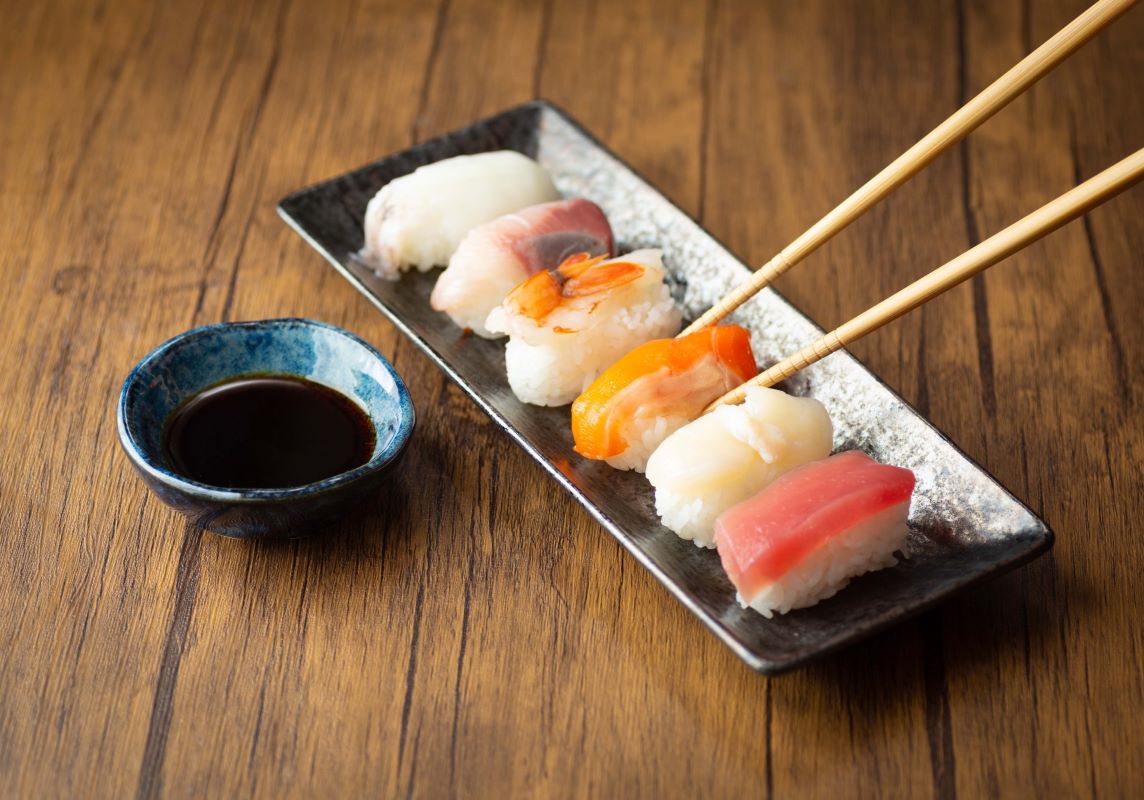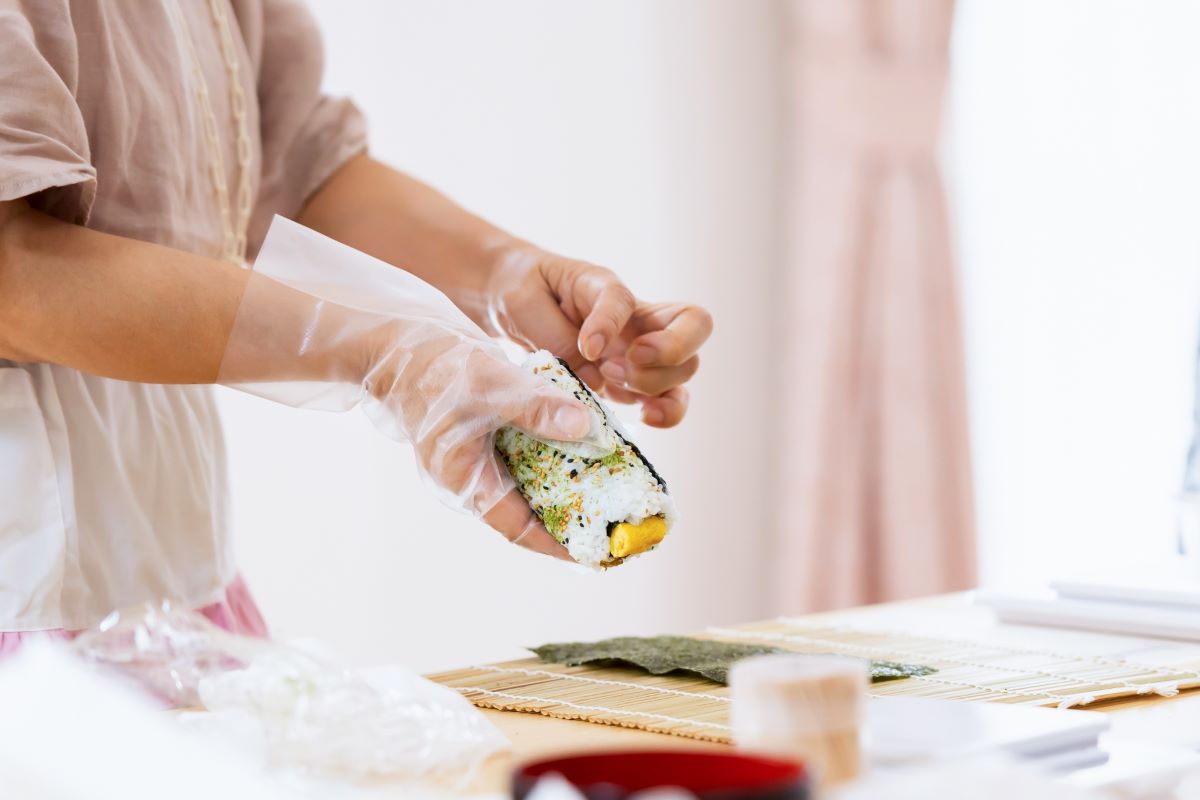Sushi is a popular Japanese dish that has spread across the world and gained a reputation for being both healthy and delicious. The dish features specially prepared vinegared rice, often accompanied by raw or cooked fish, vegetables, and other ingredients. Sushi is now enjoyed in many countries, with sushi restaurants popping up in cities worldwide.

Although sushi has become a global phenomenon, it is still deeply rooted in Japanese culture and traditions. The word “sushi” actually refers to the sour flavor of the vinegared rice, which is the most important ingredient in the dish. Sushi chefs in Japan undergo years of training to master the art of making sushi, from selecting the freshest ingredients to perfecting the texture and flavor of the rice.
With its unique blend of flavors and textures, sushi has become a favorite among foodies and health enthusiasts alike. Whether you prefer traditional nigiri sushi or modern sushi rolls, there’s no denying the appeal of this iconic Japanese dish. In this article, we’ll explore the history and culture of sushi, as well as tips for making and enjoying sushi at home.
History of Sushi

Sushi is a traditional Japanese dish that has become popular all over the world. But where did it come from? The origins of sushi can actually be traced back to ancient China, where people would preserve fish in salt and rice.
This technique was later brought to Japan, where it evolved into the sushi we know today. The earliest form of sushi, known as narezushi, was made by fermenting fish and rice together.
This process could take months, but it allowed people to preserve fish for long periods of time. Over time, sushi began to evolve and new techniques were developed to make it more palatable. During the Edo period in Japan, sushi became a popular street food. It was sold by vendors who would carry their wares in wooden boxes. These boxes would be filled with ice to keep the sushi fresh and prevent spoilage.
This period also saw the development of nigiri sushi, which is the type of sushi that is most commonly eaten today. In the early 20th century, sushi began to gain popularity outside of Japan. It was first introduced to the United States in the 1960s, and it quickly became a favorite among foodies.
Today, sushi is enjoyed all over the world, and it continues to evolve and adapt to new tastes and trends. In conclusion, sushi has a long and fascinating history that spans centuries and continents.
From its humble origins in ancient China to its current status as a global culinary sensation, sushi has come a long way. Whether you prefer traditional nigiri or modern fusion rolls, there is something for everyone to enjoy in the world of sushi.
Types of Sushi

Sushi is one of the most popular Japanese dishes worldwide, and it comes in many different varieties. Here are some of the most common types of sushi:
- Nigiri: Nigiri sushi is a type of sushi consisting of an oblong ball of sushi rice typically topped with wasabi and a slice of raw fish. Nigiri, which is popular in Tokyo, can include raw fish, cooked shrimp (ebi), squid (ika), and eel (unagi).
- Maki: Maki sushi, also known as sushi rolls, is made by rolling fresh ingredients like fish and thinly sliced vegetables in toasted seaweed (nori) into a snug cylinder and sliced into bite-size pieces. Futomaki sushi is a larger, thicker version of maki sushi. Uramaki sushi is an inside-out sushi roll where the rice is on the outside and the nori is on the inside.
- Sashimi: Sashimi is just the meat, served without other ingredients. It is typically sliced thinly and served with soy sauce and wasabi.
- Chirashi: Chirashi sushi, also known as scattered sushi, is a bowl of sushi rice topped with a variety of sashimi, vegetables, and other ingredients.
- Inari: Inarizushi, also known as inari sushi, is a type of sushi that consists of sushi rice stuffed into a pouch of fried tofu.
- Oshizushi: Oshizushi, also known as pressed sushi, is a type of sushi made by pressing sushi rice and toppings into a rectangular mold.
- Narezushi: Narezushi is a traditional type of fermented sushi that originated in Japan. It is made by fermenting fish with salt and rice for several months.
These are just a few of the many types of sushi available. Each type has its own unique flavor and texture, and there is sure to be a type of sushi that appeals to everyone’s taste buds.
Sushi Ingredients

Sushi is a delicious Japanese dish that has become popular worldwide and is made with a few basic ingredients that come together to create a beautiful and flavorful dish. Here are the main ingredients used in sushi:
| Ingredient | Description |
|---|---|
| Sushi Rice | Short-grain Japanese rice that is seasoned with rice vinegar, sugar, and salt. |
| Nori | Dried seaweed sheets that are used to wrap the sushi rice and fillings. |
| Sashimi-Grade Fish | Fresh, high-quality fish that is sliced thinly and used as a filling for sushi rolls or served on top of nigiri sushi. |
| Vegetables | Common vegetables used in sushi include cucumber, avocado, carrot, and bell pepper. |
| Soy Sauce | A salty, umami-rich condiment that is used for dipping sushi rolls and nigiri sushi. |
| Wasabi | A spicy, green paste made from Japanese horseradish that is often mixed with soy sauce and used as a dipping sauce. |
| Pickled Ginger | Sliced ginger that is pickled in vinegar and sugar. It is often served as a palate cleanser between sushi bites. |
When making sushi at home, it is important to use high-quality ingredients to ensure the best flavor and texture. You can find sushi-grade fish at Japanese markets or specialty seafood stores. It is also important to use the correct ratio of rice vinegar, sugar, and salt when seasoning the sushi rice to achieve the perfect balance of flavors. In addition to the basic ingredients, there are many variations of sushi that incorporate different fillings and toppings. Some popular sushi rolls include California rolls (made with crab meat, avocado, and cucumber), spicy tuna rolls (made with spicy tuna and cucumber), and dragon rolls (made with eel, avocado, and cucumber). Vegetarian sushi rolls are also popular and can include fillings such as tofu, egg, and pickled vegetables. Overall, sushi is a versatile and delicious dish that can be customized to suit any taste preferences. With the right ingredients and techniques, you can make restaurant-quality sushi at home.
Sushi Etiquette

When it comes to eating sushi, there are certain rules and customs that should be followed to show respect for the sushi chef, the food, and fellow diners. Here are a few key points to keep in mind:
- Use chopsticks to pick up sushi pieces, unless the sushi is too delicate or too large to be eaten that way. In that case, it is acceptable to use your hands.
- When dipping sushi into soy sauce, dip the fish side only. Avoid soaking the rice in soy sauce, as it can overpower the delicate flavors of the sushi.
- When eating nigiri sushi, turn the sushi upside down so that the fish is against your tongue. This allows you to fully appreciate the flavors of the fish before swallowing.
- It is considered impolite to mix wasabi into your soy sauce. Instead, place a small amount of wasabi directly on top of the sushi.
- When eating sushi with others, it is customary to wait until everyone has been served before starting to eat. It is also polite to offer to share dishes with others at the table.
Remember to be respectful and considerate when dining on sushi. Following these simple rules can help you fully appreciate the flavors of the sushi and show respect for the sushi chef and fellow diners.
Sushi Making Techniques

Making sushi at home can be a fun and rewarding experience, but it can also be intimidating. With the right techniques, however, anyone can create delicious sushi rolls. Here are some tips to help you get started:
- Prepare the Rice: Sushi rice is the foundation of any sushi roll. It should be cooked properly and seasoned with vinegar, sugar, and salt. To make sure that the rice is sticky enough to hold together, use short-grain Japanese rice.
- Handle the Nori: Nori is the seaweed that is used to wrap sushi rolls. It should be toasted briefly over an open flame or in a dry pan before use to make it easier to handle. Place the shiny side down on the bamboo mat and spread the rice evenly over the nori.
- Add the Filling: The filling is what makes each sushi roll unique. You can use a variety of ingredients, such as cucumber, avocado, crab meat, or raw fish. Be sure to cut the ingredients into thin strips so that they will roll easily.
- Roll the Sushi: Rolling the sushi can be the most challenging part of the process. Use the bamboo mat to help you roll the sushi tightly. Start at the bottom and roll up, using your fingers to press the filling in as you go. Once the roll is complete, use a sharp knife to cut it into bite-sized pieces.
Remember, practice makes perfect. Don’t be discouraged if your first few sushi rolls don’t turn out perfectly. With a little patience and practice, you’ll be making delicious sushi in no time!
Sushi Health Benefits
If you’re a sushi lover, you’ll be happy to know that sushi has several health benefits. Here are some of the benefits of eating sushi.
1. Omega-3 Fatty Acids
Sushi is known for its high concentration of omega-3 fatty acids. These fatty acids are essential for the body and can improve heart health, reduce inflammation, and boost brain function.
2. Low in Calories
Sushi is low in calories, making it an excellent choice for people who want to lose weight. Most sushi rolls contain less than 300 calories, making it a filling and healthy meal option.
3. High in Protein
Sushi is a good source of protein, which is essential for building and repairing tissues. Most sushi rolls contain fish, which is high in protein and other essential nutrients.
4. Good for the Heart
Sushi is good for the heart because it contains fish, which is high in omega-3 fatty acids. These fatty acids can reduce the risk of heart disease and stroke.
5. Boosts Immune System
Sushi also contains several vitamins and minerals that can boost the immune system. For example, sushi contains vitamin A, which is essential for maintaining healthy skin and eyes.
6. Low in Saturated Fat
Sushi is low in saturated fat, which can reduce the risk of heart disease and stroke. Most sushi rolls contain fish, which is low in saturated fat and high in omega-3 fatty acids. In conclusion, sushi has several health benefits, including being low in calories, high in protein, and good for the heart. Sushi is also a good source of omega-3 fatty acids, which can improve brain function and reduce inflammation. If you’re looking for a healthy and delicious meal option, sushi is an excellent choice.
The Sum Up
After exploring the history, ingredients, and health benefits of sushi, it’s clear that this Japanese cuisine has earned its place in the international culinary scene. Sushi’s unique blend of flavors, textures, and presentation make it a favorite among food lovers around the world.
One of the most impressive aspects of sushi is its versatility. Whether you’re in the mood for a light snack or a full meal, sushi has options to suit every appetite. From traditional nigiri and maki rolls to more modern fusion creations, sushi chefs are constantly pushing the boundaries of what’s possible with this beloved dish.
But sushi isn’t just delicious – it’s also packed with nutrients that can benefit your health. The omega-3 fatty acids found in fish like salmon and tuna can help reduce inflammation and improve heart health. And because sushi is often served with nutrient-rich ingredients like avocado, cucumber, and seaweed, it’s a great way to boost your intake of vitamins and minerals.
So whether you’re a seasoned sushi fan or a newcomer to this delicious cuisine, there’s no denying the appeal of this Japanese classic. From its rich history to its health benefits and endless variety, sushi is a true culinary treasure.



